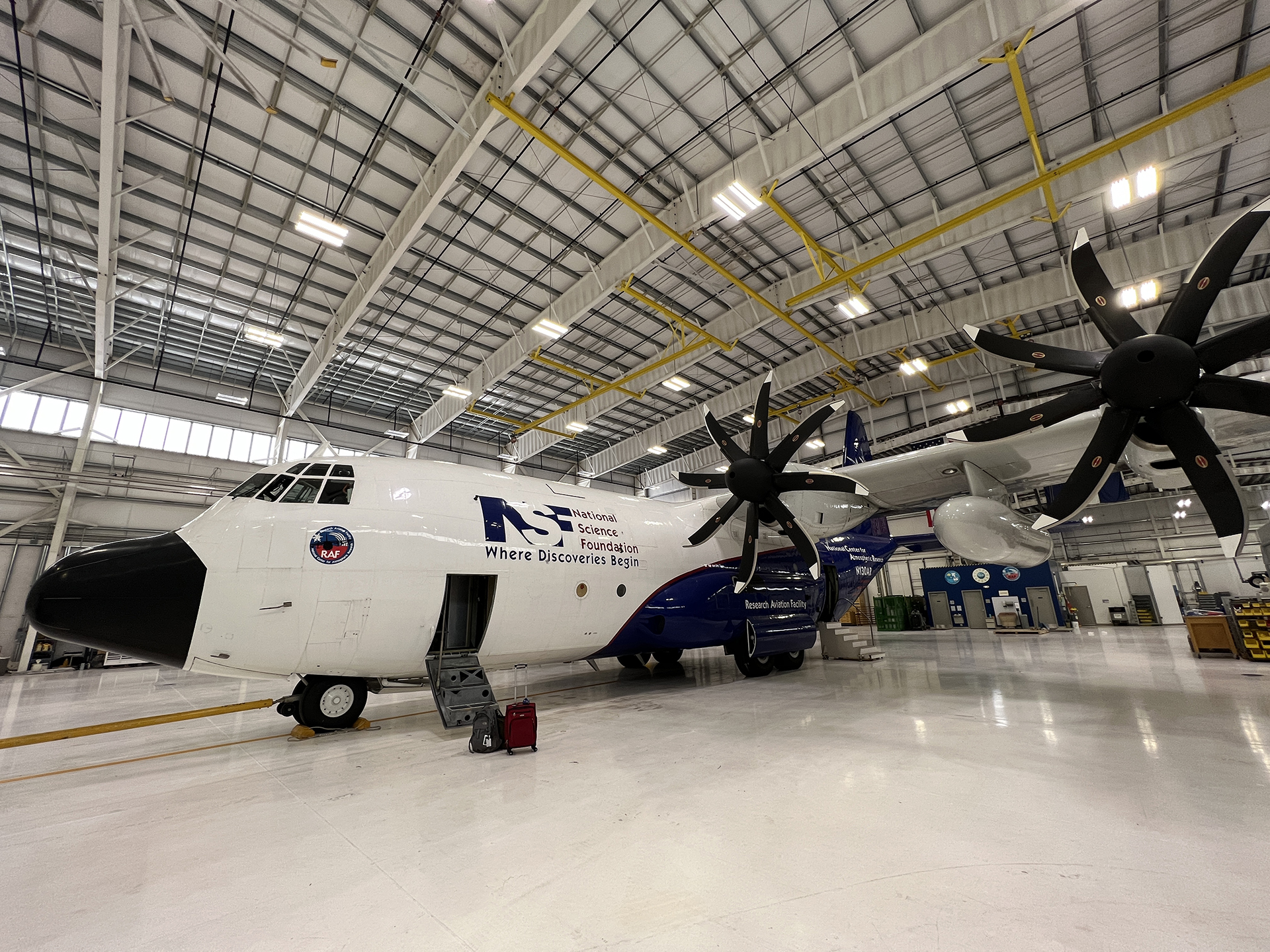
Adapted from a National Center for Atmospheric Research news release.
Colorado State University researchers are partners in a project that could revolutionize our ability to observe, understand and ultimately predict high-impact weather events. The National Science Foundation has awarded $91.8 million in funding for a next-generation airborne radar designed by the National Center for Atmospheric Research, and CSU will contribute to the radar’s research and development.
The Airborne Phased Array Radar will improve on existing radar by allowing scientists to sample the atmosphere at higher spatial resolution and probe more deeply into storms, ultimately painting a more detailed picture of storm dynamics and microphysics. APAR will also be an extremely flexible platform. Its agile scanning capability can switch radar beam directions almost instantaneously, allowing scientists to scan the atmosphere in any direction, a contrast to traditional fixed-direction airborne scanning radars.
The rich data generated from APAR will give forecasters critical information for better predicting a range of high-impact weather events, including hurricanes, atmospheric rivers, tornadoes, derechoes and blizzards.
CSU engineers and atmospheric scientists will work together on APAR’s development. They will use machine learning and high-performance computing to achieve the highest data quality and best scientific products possible from the new radar system.
Chandrasekar, a University Distinguished Professor in the Department of Electrical and Computer Engineering and fellow of the Cooperative Institute for Research in the Atmosphere, will lead CSU’s team. Chandrasekar is an expert in weather radar and radar signal processing who holds numerous patents in radar system design, radar network development and radiofrequency communications.
“CSU will play a key role in this critical national infrastructure,” Chandrasekar said. “APAR builds on CSU’s reputation as a world leader in radio frequency and radar programs.”
Atmospheric Science Professor Michael Bell, a co-investigator on APAR, and Chandrasekar also lead the NSF-supported community research radar, SEA-POL, a precipitation radar designed and built by CSU engineers. The scientific community can request to use NSF-supported assets like SEA-POL and APAR for research anywhere in the world. SEA-POL was most recently deployed in Japan to study extreme rainfall in the PRECIP campaign led by Bell and Kristen Rasmussen, associate professor of atmospheric science.
Taking the radar to the storm
Airborne radar is one of the only observing platforms available to obtain the highest resolution measurements of wind and precipitation structure of weather systems. Advancements in phased array technology will enable scientists to better measure the characteristics of heavy rain, snow and hail in remote weather systems over the ocean or land areas that aren’t in range of ground-based systems.
“With most ground-based radars, you have to wait for the weather to come to you, but with an aircraft you can take the radar to the storm anywhere in the world,” Bell said.
Bell leads the CSU Tropical Weather and Climate Research Team, the group responsible for CSU’s Atlantic hurricane forecast. His research group will develop next-generation radar data quality control and wind and precipitation analysis techniques and tools for APAR.
Airborne radar is a key technology aboard NOAA’s Hurricane Hunter aircraft that sends information about hurricanes back to the ground for forecaster analysis. APAR technology will eventually replace NOAA’s current airborne radars.
“We are working to design products that can take advantage of APAR capabilities in the future and continue to improve weather forecasts,” Bell said.
Bell began his career at NCAR as an airborne radar scientist working with the previous generation radar, called ELDORA for “Electra Doppler Radar,” which was retired in 2013. ELDORA contributed to many scientific breakthroughs in our understanding of severe weather, cold fronts, mountain meteorology and hurricanes.
“ELDORA was very advanced technology at the time, but the new capabilities provided by the longer wavelength, electronic scanning and dual-polarization measurements of APAR will be a big leap forward,” Bell said. “It is exciting to now have this opportunity to help build the next-generation system in collaboration with NCAR and look forward to new discoveries that APAR will enable.”
NCAR is sponsored by the National Science Foundation. Other APAR partners include NOAA, Ball Aerospace, State University of New York (SUNY) Stonybrook, University of Massachusetts Amherst and the University of Oklahoma. NCAR expects to have the radar up and running in 2028.